
Get your fix of expert articles delivered straight to your inbox!
No Thanks - I don't like cool stuff

Learning to tie good knots is one of the most important things you can do as a beginning fly angler to enhance your experience on the water and catch more fish. Not only will tying strong knots help you land the big ones, you will be able to set up your equipment and retie lost or tangled rigs faster while you are out on the water and spend more time fishing. This article will teach you how to tie the most effective and useful knots that you will use on the water while fly-fishing.
A good fly connection is what attaches your fly to the end of your leader and keeps it there. It is by far the most important connection that you will tie when fly-fishing. With the right knot, you will put more fish in the net, save more flies from snags, and, in some cases, give your fly better movement in the water.
There are many different knots that will work for tying your fly to your tippet, and the clinch knot remains one of the best choices. The clinch is a proven knot that has gained worldwide popularity for being both strong and simple to tie.
A good knot should be easy enough to tie that you aren’t struggling with it on the water while you should be fishing. With practice, it should be manageable with numb fingers on a cold day or when it is hard to see during low-light hours. The clinch is all of these things, along with being reliable. When tied with care, it has good breaking strength and will not slip even if the tag end is trimmed very close.
How to tie a clinch knot:
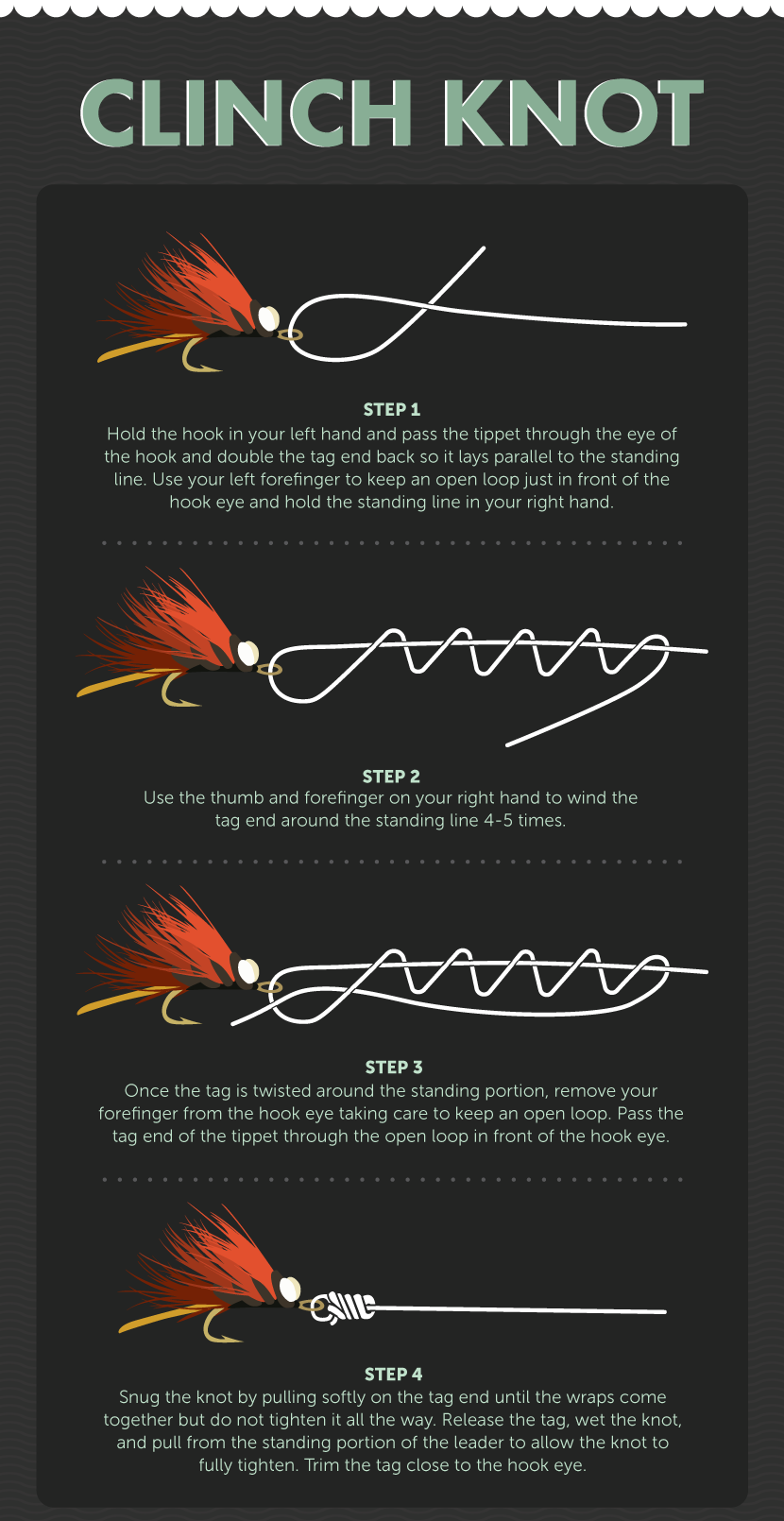
When fishing certain types of flies such as streamers, using a loop knot to connect your fly to the tippet will enhance the movement and action of the fly in the water. The nonslip loop is one of the strongest knots in this category and will never slide down or cinch tight on your fly like some other knots.
Choose a loop knot when you are fishing streamers, poppers, or other types of flies that are retrieved with a stripping technique. The open loop that connects the leader to the hook eye allows the fly to swing freely at the end of the tippet, which enhances its wobbling, darting, or otherwise erratic action in the water.
How to tie a nonslip loop knot:
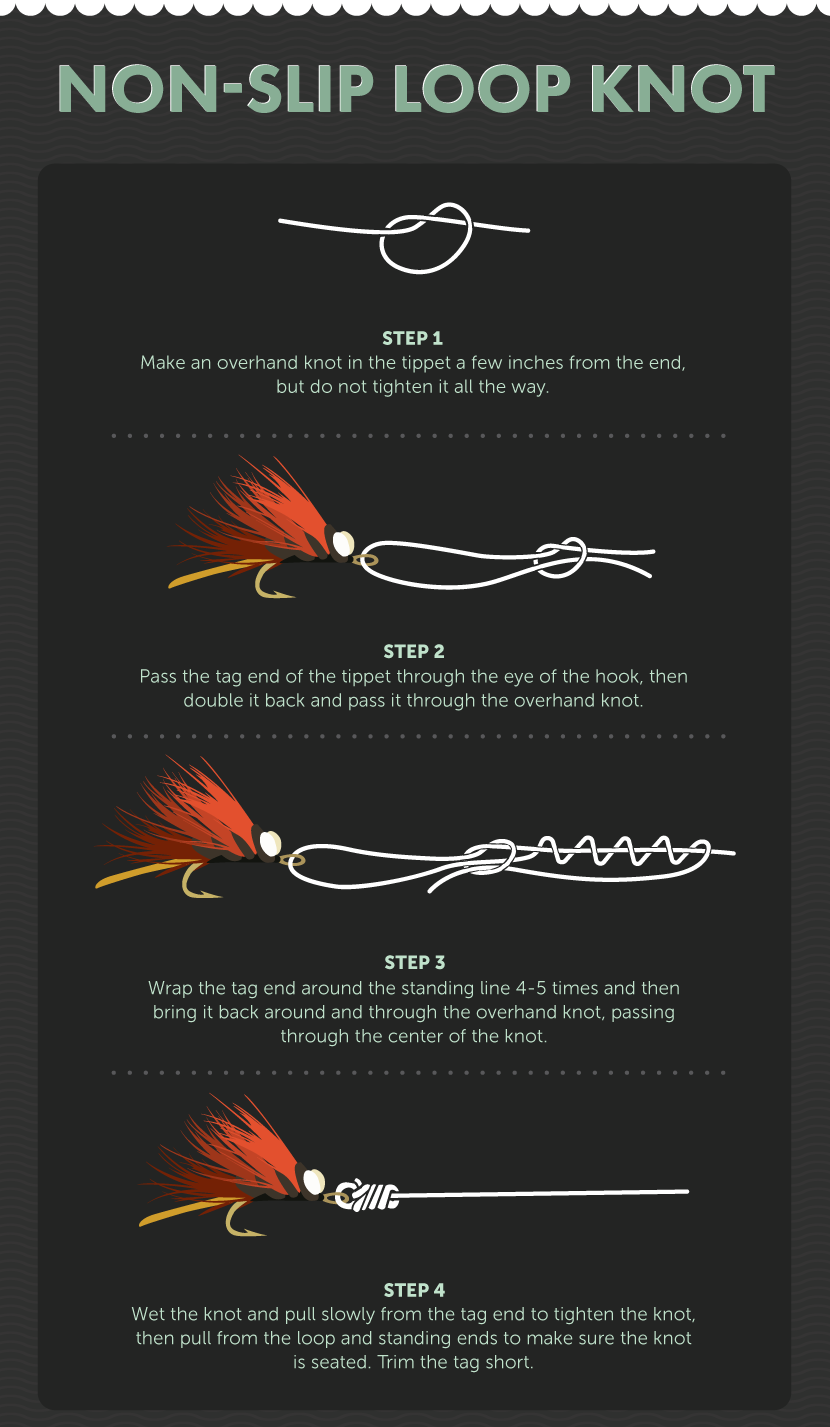
A second essential skill you will need to learn is how to connect sections of leader and tippet material together while you are out on the water. There are multiple reasons you might need to tie two pieces of material together while fishing, from adding tippet to a leader to replacing lost material if you get a snag or break off on a big fish. Regardless of the reason, practicing these connections will ensure that you can tie them quickly and get your flies back in the water.
The double surgeon’s knot may not be the prettiest knot for connecting two pieces of material, but it is certainly the simplest and most efficient connection you can use. When you first begin fly-fishing, it may sometimes seem like you spend as much time retying and untangling rigs as you do fishing! Learning leader connections that are fast and easy to tie minimizes time wasted and allows you to get your flies back in the water in a hurry. The double surgeon’s knot is tough, reliable, and super fast to tie with some practice.
How to tie the double surgeon’s knot:
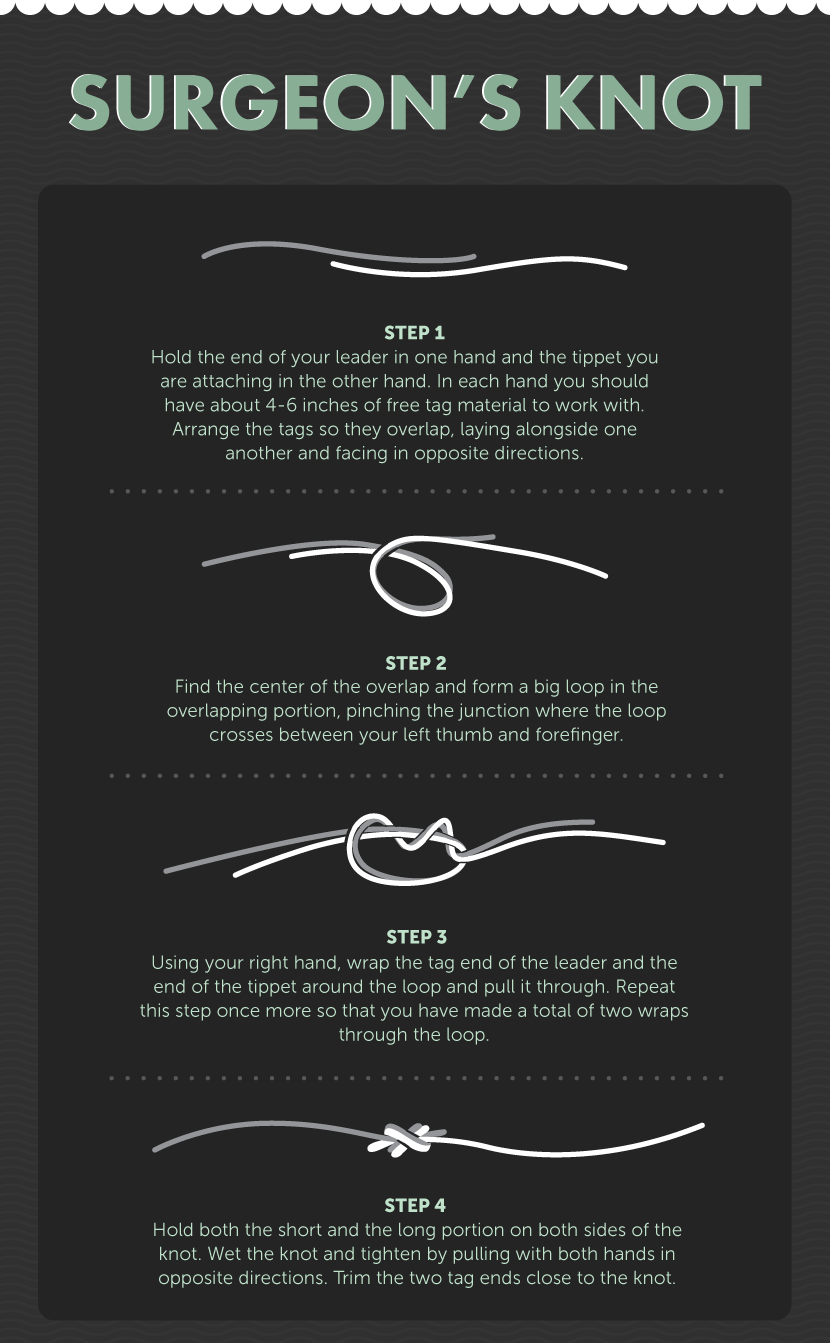
Many fly lines and store-bought leaders now come with premade loops at the ends so you can quickly change them out when needed. Learning to connect your leader loop to your fly line correctly will save you time and frustration when you are out on the water. Here we will describe how to attach a new leader to a looped fly line using a loop-to-loop connection.
How to make a loop-to-loop connection:
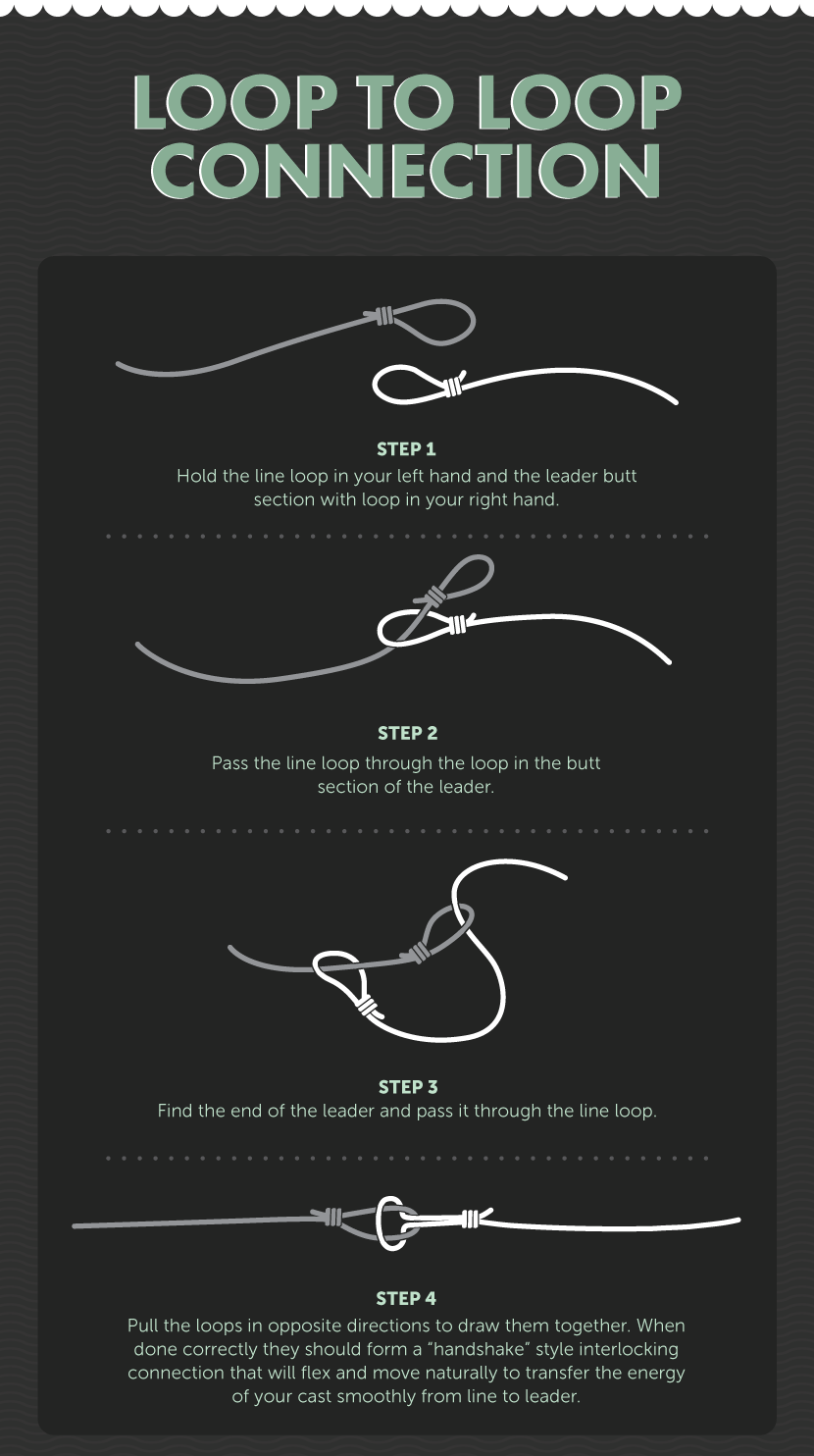
While many people choose to use the loop-to-loop to join their leader to their fly line, some still prefer to attach the leader directly to the fly line. The Albright knot is one of the strongest direct leader-to-fly-line connections you can make. It is faster, easier to tie, and does not require special tools like some other line-to-leader connections. Learning this knot will also help if your loop-to-loop connection happens to break during fishing and you need to tie it back together.
How to tie the Albright knot:
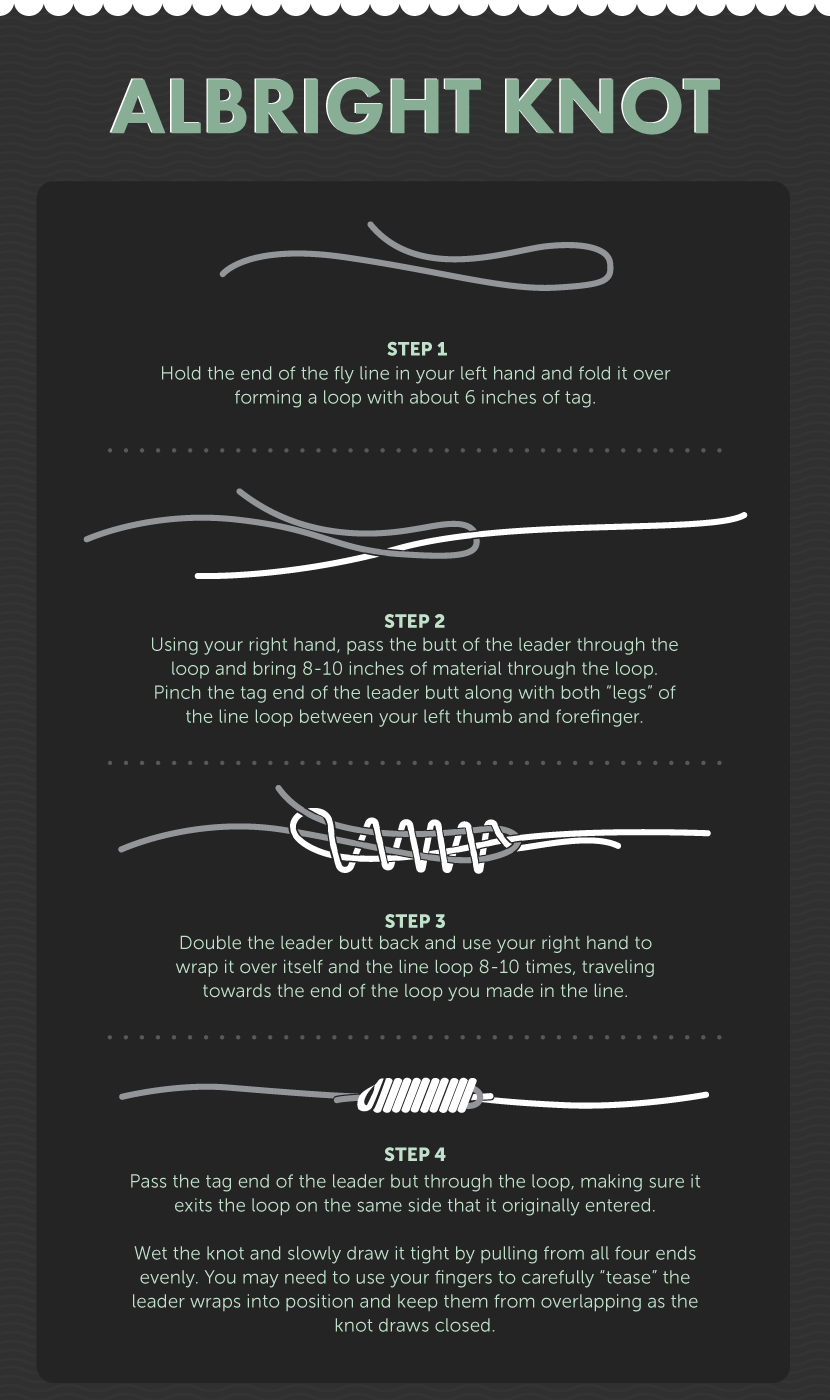
As with any fly-fishing technique, practicing these knots at home will help you get the hang of them and ensure that you are able to tie them quickly should the need arise on the water. I recommend beginning with something thick and bright like paracord or nylon rope, then graduating to the smaller-diameter material you will be using while fishing. Practice these knots and you are guaranteed to have a better experience out on the water every time.
Written by:

Get your fix of expert articles delivered straight to your inbox!
No Thanks - I don't like cool stuff